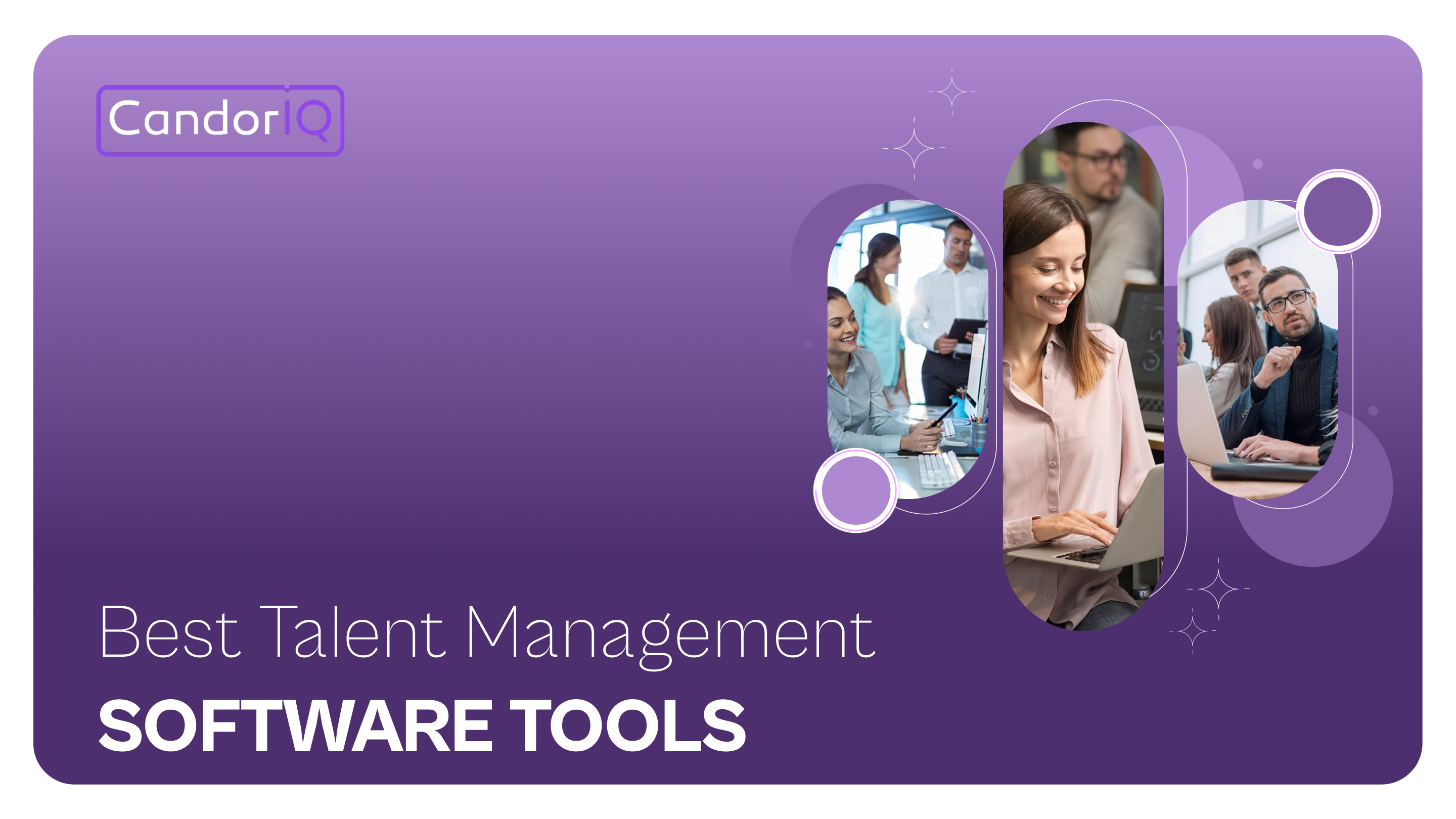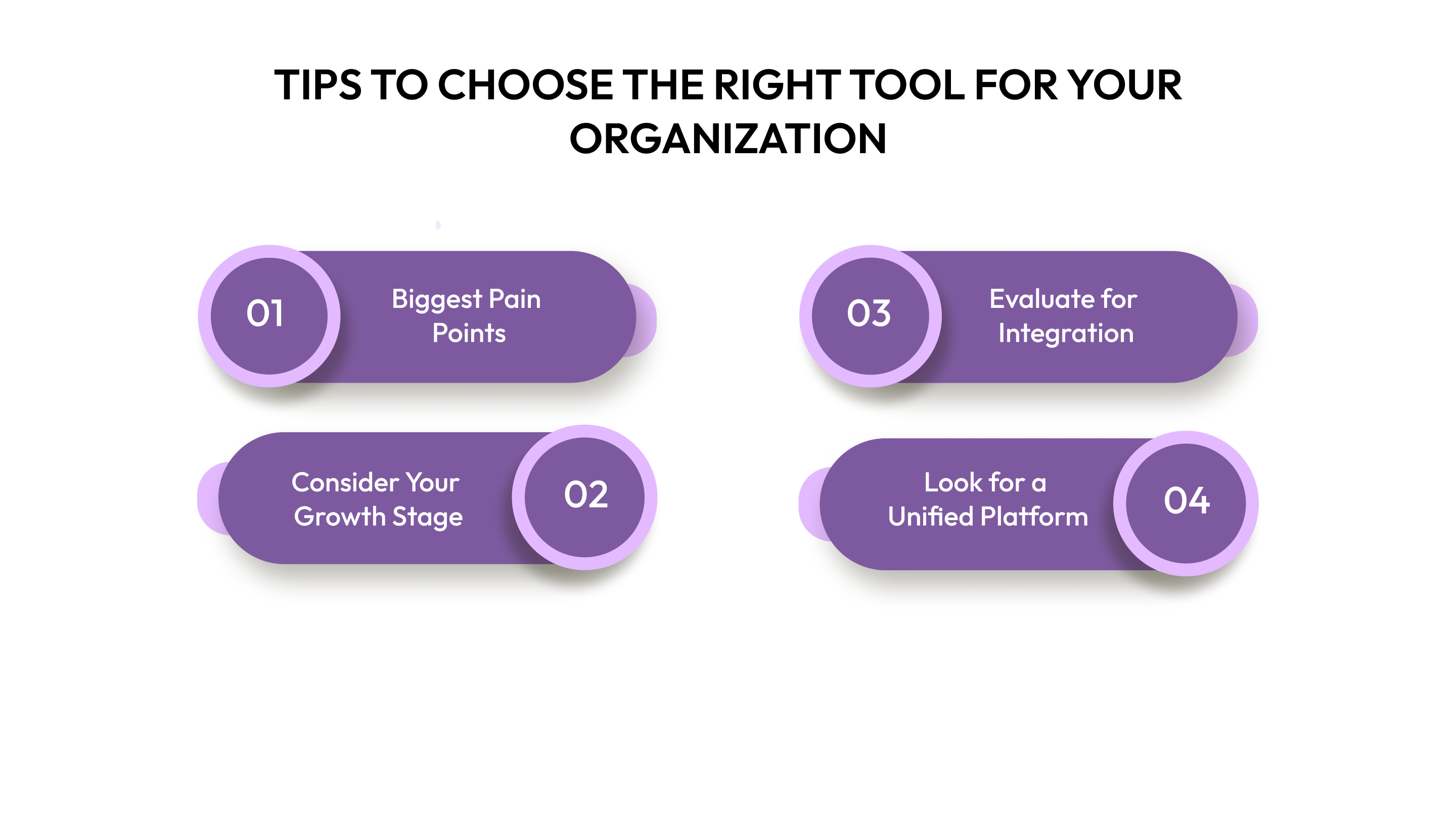Best Talent Management Software Tools for 2025
Find the best corporate talent management tools for 2025. Compare top picks like Workday HCM and BambooHR. Choose wisely today!

People are the most valuable assets for your company. But, finding and keeping great talent has never been more challenging. Here, the right talent management tools help you keep up. With hybrid and remote teams now the norm, businesses need simple yet powerful platforms to manage everything from compensation to workforce planning.
In fact, a recent Gartner survey revealed that 83% of HR leaders are putting more focus on talent management compared to just three years ago. For growing companies, the right software doesn’t just save time; it helps build fair pay structures, improve retention, and keep HR, finance, and leadership teams aligned.
In this blog, we’ll explore the best talent management software tools for 2025 and how they can support your organization’s growth.
At a glance
- All-in-one software platforms help manage everything from hiring and compensation to performance and retention, replacing fragmented tools and spreadsheets.
- They turn HR and Finance teams into strategic partners with a unified, data-driven system for smarter decision-making.
- When choosing the best platform, focus on your pain points, company growth stage, and the tool's ability to integrate with your existing systems.
What are Talent Management Tools?
A talent management tool is software that runs the full employee journey in one place. It’s your hub for hiring, performance, career growth, and fair pay. Instead of juggling separate apps and endless spreadsheets, you work in a single, connected system. Everything stays in sync and is easy to find.
With all your people data together, leaders get a clear, up-to-date view. Decisions become faster, smarter, and easier to explain.
So, you know you need a tool, but how do you avoid getting lost in the sea of features and jargon?
What Features Should You Look For in Talent Management Tools?

While every company is different, focusing on a few core capabilities will ensure you invest in a platform that provides real strategic value, not just basic record-keeping.
Choosing the right tool depends on your organization's specific needs, but if you’re a growing company, these key features are absolutely essential:
- Compensation and Pay Band Management: This is crucial for ensuring fair and equitable pay. The best tools let you define pay bands by level, location, and department, and use real-time market data to make adjustments. No more guessing games or relying on outdated surveys.
- Headcount and Workforce Planning: Strategic growth requires careful planning, especially when people are your biggest expense. Look for a tool that allows you to model future org charts, forecast financial implications, and align your hiring plans with your budget before you open a single requisition.
- Performance Management and Feedback: A good tool moves beyond painful annual reviews to support continuous feedback and development. It should help with setting clear goals, tracking progress, and facilitating productive conversations between managers and employees.
- Recruiting and Onboarding: From applicant tracking (ATS) to creating a great first-day experience, the platform should streamline the process of finding and integrating new hires seamlessly.
- Reporting and Analytics: Data is power. A great talent management tool provides easy-to-understand dashboards and reports that give you a clear view of your workforce health, from turnover rates to budget utilization.
- Integration and Automation: The software should seamlessly connect with the other systems you use, like your HRIS and finance systems. Automation of tasks like approval workflows and reminders can save your team countless hours.
Now that we know what makes a great platform, let’s look at who is leading the pack for 2025.

Also Read: Benefits of a Talent Management System for Growing Organizations
Top Talent Management Tools in 2025
The market is filled with excellent options, but for scaling, people-focused organizations, these platforms stand out because they offer robust features, scalability, and a focus on strategic alignment between HR and the business.
1. CandorIQ
Best for: Fast-growing, mid-sized organizations (50–5,000 employees) with a global or remote workforce that need a unified platform for compensation, headcount planning, and retention.
CandorIQ stands out because it solves the classic problem of HR-Finance misalignment. Instead of managing compensation and headcount in separate spreadsheets, it provides a single, unified platform.
This allows HR and Finance teams to collaborate on everything from defining transparent pay bands and running geo-adjustment compensation cycles to modeling new headcount scenarios and approving new hire requests.
Key Strengths:
- Strategic Unification: Connects pay bands, comp cycles, and financial planning in one system.
- Budget Governance: Features like Headcount Scenario Planning prevent overspending before it happens and give leadership real-time visibility into burn rate.
- Transparency & Retention: The Candidate Offers product allows you to generate competitive total compensation packages that clearly show salary, equity, and benefits, boosting employee clarity and retention.
- AI Agent: Provides data-driven comp recommendations based on historical and peer data, making your People team more strategic.
2. BambooHR
Best for: Small to medium-sized businesses looking for an all-in-one, user-friendly HR platform.
BambooHR is the go-to for companies that need to professionalize their HR function quickly. Known for its incredibly intuitive and clean interface, it makes it easy for growing companies to manage HR data, track time off, administer benefits, and handle performance management.
It’s particularly popular for companies that are moving away from manual, spreadsheet-based processes for the first time, prioritizing simplicity and ease of use across the board.
3. Workday
Best for: Large, global enterprises with complex HR and financial needs.
Workday is an industry giant known for its incredibly robust and scalable Human Capital Management (HCM) suite. It offers extensive features for talent management, including recruitment, performance, learning, and succession planning.
Its major strength lies in its ability to handle complex organizational structures and provide powerful, real-time analytics by integrating HR and finance data, making it a true enterprise resource planning (ERP) system for people.
4. UKG Pro
Best for: Mid-to-large organizations that need a powerful, all-in-one platform for HR, payroll, and workforce management.
UKG Pro (formerly UltiPro) offers a complete HCM solution built on a unified database, which ensures that payroll, timekeeping, and HR data are always in sync.
It focuses heavily on providing a personalized and engaging experience for employees while giving HR leaders the deep tools they need to streamline processes, including strong modules for succession planning, career development, and compliance.
5. TalentGuard
Best for: Companies focused on strategic career pathing, succession planning, and skills-based development.
TalentGuard is a specialized platform that helps companies align their workforce with business goals by focusing on skills and competencies. Its core strength is in defining and managing career progression—it uses AI to generate clear career maps and identify skill gaps. This makes it an ideal choice for organizations that want to build clear, transparent paths for employee growth and retention.
6. Gusto
Best for: Small businesses and startups that need an easy-to-use, integrated solution for payroll, benefits, and basic HR.
Gusto is a popular choice for smaller teams due to its simple and comprehensive approach to payroll and benefits. It automates payroll tax filing and deductions, making it a favorite for new businesses.
While its talent management features are more foundational than others on this list, it provides a solid, centralized foundation for hiring, onboarding, time tracking, and compliance.
Looking at this comprehensive list can feel overwhelming, but finding the perfect fit for your company doesn't have to be hard.
Also Read: The Complete Guide to Effective Talent Management
Tips to Choose the Right Tool for Your Organization

To find the right tool for you, focus on your strategic needs, and the choice will become much clearer.
Here are a few quick tips to guide your evaluation process:
- Define Your Biggest Pain Points: Are you struggling with disconnected spreadsheets, a long compensation cycle, or a messy headcount approval process? Prioritize the tools that directly solve your most pressing strategic challenges (like CandorIQ for unified compensation/headcount, or BambooHR for general ease-of-use).
- Consider Your Growth Stage: A startup with 50 employees has different needs than a scaling company with 500. Choose a solution that is built to handle your current size and can scale with you.
- Evaluate for Integration: The true value of a talent management tool is its ability to connect your data. Make absolutely sure it integrates seamlessly with your existing HRIS, ATS, and finance systems to avoid double-entry and data errors.
- Look for a Unified Platform: While many tools specialize in one area (like compensation or org charts), the platforms that connect key strategic functions, like compensation and headcount planning, are the ones that save your team significant time and prevent costly financial misalignment.
By taking the time to select the right platform now, you can ensure a strong foundation for future growth.
Also Read: How to Excel in Talent and Workforce Planning?
Final Thoughts
The right talent management tool is more than just an HR database; it’s an investment in your company’s future growth and financial health.
By replacing outdated, manual processes with a unified and data-driven platform like CondorIQ, you can ensure fair pay, plan for growth with confidence, and transform your HR and finance teams from reactive administrators into true strategic partners. Taking the time to select the right platform now will pay dividends in employee retention, budget accuracy, and overall organizational alignment for years to come.
Ready to see how a unified platform can transform your organization? Explore how CandorIQ helps people-focused companies streamline compensation, headcount planning, and retention. Request a personalized demo today!
FAQs
1. How can talent management software help identify hidden skills within my team?
Advanced platforms analyze performance data and employee profiles, uncovering underutilized skills that can be leveraged for better internal mobility and development.
2. Can talent management software predict future workforce needs?
Yes, many modern solutions offer predictive analytics that forecast future staffing requirements, skill gaps, and potential turnover, allowing businesses to plan proactively for workforce changes.
3. How does talent management software support employee well-being beyond scheduling?
Beyond scheduling, some platforms integrate features that focus on employee well-being, such as wellness tracking, feedback loops, and access to mental health resources, ensuring a more holistic approach to employee care.


